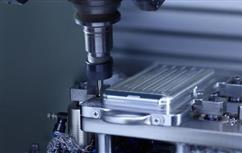关键词:
低氧血症
急性心源性肺水肿
有创-无创机械通气
血流动力学
Acute cardiac pulmonary edema
Hemodynamics
Hyoxemia
Invasive-noninvasive mechanical ventilation
低氧血症
急性心源性肺水肿
有创-无创机械通气
血流动力学
Language of Keywords: English
Chinese
摘要:
Objective: To explore the influence of sequential invasive-noninvasive mechanical ventilation on hyoxemia and hemodynamics in patients with acute cardiac pulmonary edema. Methods: 49 patients with acute cardiac pulmonary edema treated in our hospital from March 2013 to March 2015 were divided into two groups according to the random number table method. The control group was received routine anti heart failure therapy combined with invasive mechanical ventilation, and the observation group based on the treatment of control group underwent noninvasive nasal mask bi level positive airway pressure ventilation. The comparisons of hyoxemia and hemodynamics parameters of two groups before and after treatment were conducted, and the invasive mechanical ventilation time, total mechanical ventilation time, incidence of VAP, rate of recurrent heart failure and death cases between two groups were compared. Results: There was no deaths in the process of treatment. After treatment, the hyoxemia and hemodynamics parameters of two groups had improvement with different degree, the difference was statistically significant (P<0.05). No statistical difference on hyoxemia and hemodynamics parameters between two groups after treatment was found(P>0.05). The invasive mechanical ventilation time, total mechanical ventilation time of observation group were less than those of control group, and the rate of VAP was less than that of control group, the differences were statistically significant (P<0.05). There was no statistical significance on the rate of heart failure recurrence(P>0.05). Conclusions: Sequential invasive-noninvasive mechanical ventilation can obviously improve the the hyoxemia and hemodynamics in patients with acute cardiac pulmonary edema, which is safe an effective and has important value as the treating measures of acute cardiac pulmonary edema. [ABSTRACT FROM AUTHOR]
 中文科技期刊
中文科技期刊
详细信息
 中文科技期刊
中文科技期刊
详细信息
 欢迎来到三峡大学图书馆!
欢迎来到三峡大学图书馆!


